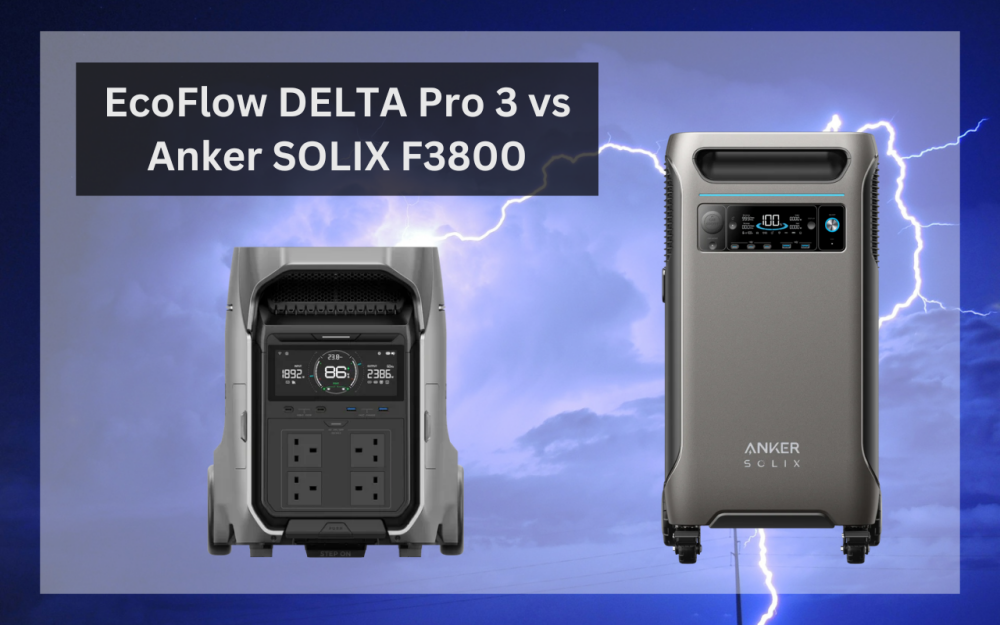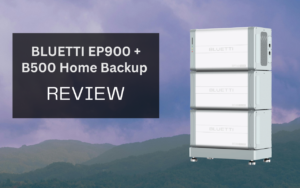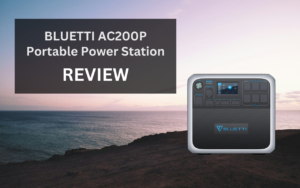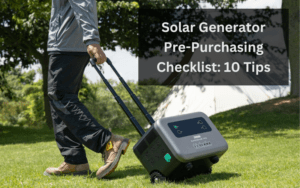Welcome to our comparison of EcoFlow DELTA Pro 3 vs Anker Solix F3800. This article will analyze the specifications and features of each model to help you make the best choice for your home backup and portable power needs. We will delve into their power capacities, expandability options, and the efficiency of their charging systems. Additionally, we’ll explore their smart features, battery technology, and overall design to determine which power station offers the most value and convenience for managing energy in various environments.
In addition to their solar panel and smart devices range, EcoFlow’s portable power station product line-up is categorised into two main series: the DELTA Series and the RIVER Series. The DELTA series is designed for those requiring robust power solutions, featuring models with higher capacities and outputs. On the other hand, the RIVER series caters to customers looking for more affordable options with moderate power needs.
EcoFlow’s DELTA range consists of the DELTA, DELTA Mini (now discontinued), DELTA Max, DELTA Pro, DELTA 2, DELTA 2 Max, DELTA Pro Ultra, and DELTA Pro 3 (where ‘Pro’ trumps ‘Max’). Interestingly, EcoFlow decided to skip out the DELTA Pro 2 entirely.
Click here to see the full range of DELTA products.
We always recommend purchasing EcoFlow and Anker products directly from their official websites or Amazon stores. While there are many reputable wholesalers and third-party sellers, buying from these sources may invalidate your warranty and make it more challenging to contact customer support. For this reason, any and all links in this article will take you straight to the brands’ website or official Amazon store.
For more information on each brand’s warranty policies, visit EcoFlow and Anker‘s Warranty Policy webpages.
EcoFlow DELTA Pro 3
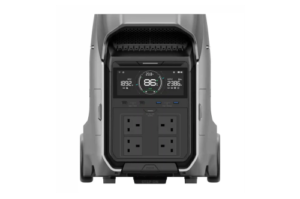
Price (UK): £2,799
Price (US): $3,699 (sale: $3,199)
Power (W): 4000
Capacity (Wh): 4096
Cell chemistry: LFP
Weight: 113.5 lb (51.5 kg)
Dimensions: 27.3 x 13.4 x 16.1 in (693 x 341 x 410 mm)
Warranty: 5 years
Customer rating: ⭐⭐⭐⭐⭐ (63)
Expandable capacity up to 12kWh (for one DELTA 3 Pro unit) up to 48kWh (max expandability).
Charging Options: AC, Solar, Car, EV Charging Piles, EcoFlow Alternator Charger, Dual-PV Charging, Smart Home Panel 2. Life Cycles: 4,000 cycles to 80% capacity. AC Charging: Up to 80% in 50 minutes. Solar Charging: Maximum input 2600W. Car Charging: 12V 8A Max.; 48V 20A Max.
Anker SOLIX F3800
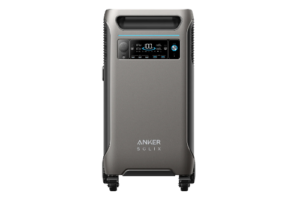
Price (UK): £3,699 (sale: £2,699)
Price (US): $3,999 (sale: $2,999)
Power (W): 6000
Capacity (Wh): 3840
Cell chemistry: LFP
Weight: 132.3 lb (60 kg)
Dimensions: 27.6 x 15.3 x 15.6 in (701 x 389 x 396 mm)
Warranty: 5 years
Customer rating: ⭐⭐⭐⭐⭐ (106)
Expandable capacity up to 53.8kWh.
Charging Options: AC, Solar, Car. Life Cycles: 3,000+ cycles. AC Charging: 1.5 hours to 80%. Solar Charging: Maximum input 2400W. Car Charging: Supports auxiliary port charging 120W.
Comparison Overview Chart: EcoFlow DELTA Pro 3 vs Anker SOLIX F3800
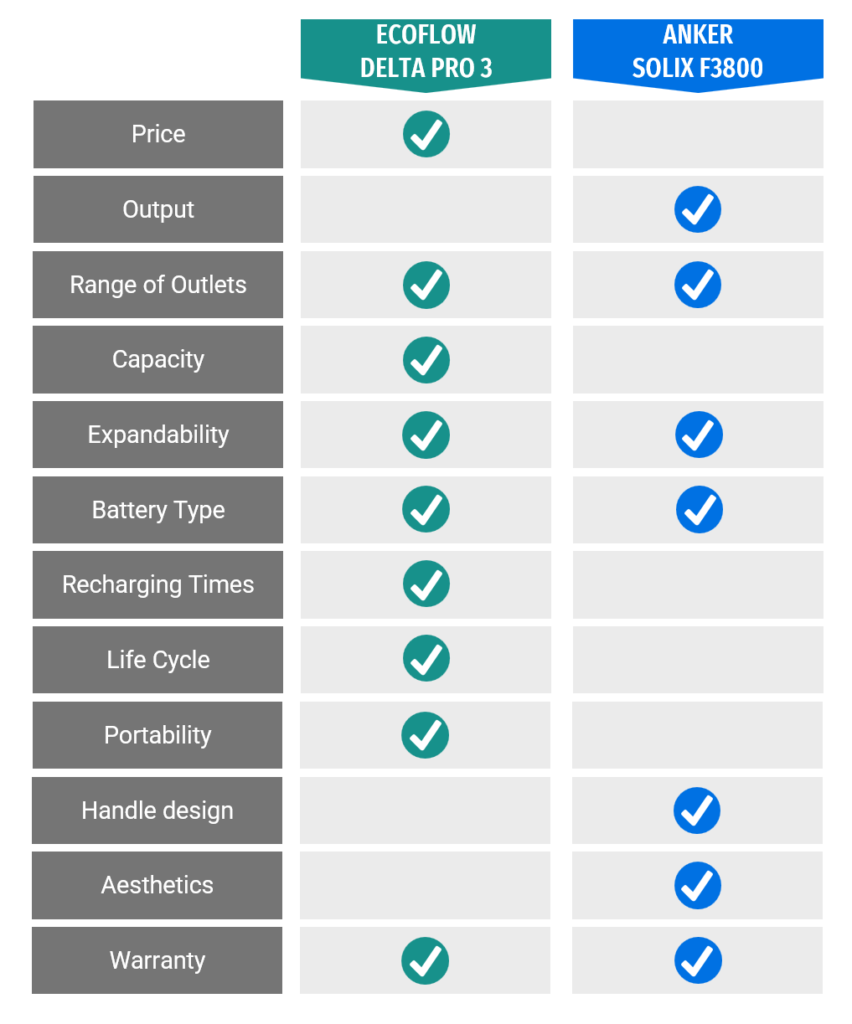
Price
At full price, the EcoFlow DELTA Pro 3 is slightly cheaper at $3,699, compared to the Anker SOLIX F3800 at $3,999. However, both EcoFlow and Anker frequently have sales throughout the year, so there’s a high chance one or both products will be on sale when you’re reading this.
(At the time of writing, the Anker SOLIX F3800 is currently at a lower sale price of $2,999, whilst the EcoFlow DELTA Pro 3 is on sale for $3,199.)
Output (W)
In terms of base output, the Anker SOLIX F3800 has a higher output of 6000W compared to the EcoFlow DELTA Pro 3’s output of 4000W (although it can reach 6000W when using its ‘X-Boost’ setting).
Both models also feature a surge capacity, with the Anker SOLIX F3800 offering a peak surge output of 9000W, whilst the EcoFlow DELTA Pro 3 can handle surges up to 8000W.
Outlet Options
In terms of outlets, the winner depends on your personal preferences and requirements, but they are both very similar. The EcoFlow DELTA Pro 3 has 7x AC outlets, 2x USB-A, 2x USB-C, and 2x 12V DC outlets (1x DC5521 and 1x Anderson Port).
In contrast, the Anker SOLIX F3800 has 8x AC outlets (6x 120V NEMA, and 2x 240V NEMA), 2x USB-A, and 3x USB-C. You can directly charge up EVs and RVs with its 240V AC outlets (specifically, the NEMA 14-50 and L14-30). The Anker model has no dedicated DC outlets.
Below is the full list of outlet options for each model (for the US):
EcoFlow DELTA Pro 3:
- AC: 7x outlets (4000W max, 8000W surge, 6000W with X-Boost)
- USB-A Fast Charge: 2x outlets (5V 2.4A 9V 2A 12V 1.5A 18W max)
- USB-C: 2x outlets (5/9/12/15/20V 5A 100W max)
- 12V DC: 2x outlets total (1x DC5521 5A max; 1x Anderson Port 30A max) (12.6V/30A 378W)
Anker SOLIX F3800:
- AC: 8x outlets
- 6x 120V (NEMA 5-20(20A))
- 2x 240V (1x NEMA 14-50 (max 6,000W); 1x NEMA L14-30 (max 6,000W))
- USB-A: 2x outlets (12W, 24W in total)
- USB-C: 3x outlets (100W, 300W in total)
Neither model features wireless charging ports.
Capacity (Wh)
The EcoFlow DELTA Pro 3 has a higher base capacity of 4,096Wh, compared to the Anker SOLIX F3800’s 3,840Wh.
Both models have expandable capacity with additional battery units (as well as scalable base units).
The EcoFlow DELTA Pro 3’s capacity can be scaled up to 12kWh for a single DELTA Pro 3 model (where configuration includes 1x DELTA Pro 3 and 2x expansion batteries, each of which has a capacity of 4,096Wh). While each DELTA Pro 3 power station can only have a maximum of two expansion batteries per unit, two or three DELTA Pro 3 units themselves can be chained with a Smart Home Panel 2 or an EcoFlow 50 Amp Hub to give an expanded capacity of up to 36kWh. Furthermore, you can even combine your EcoFlow DELTA Pro 3 with a Smart Generator 4000 (Dual Fuel) for a max expandable capacity of 48kWh.
As for the Anker SOLIX F3800, its capacity can be scaled up to 26.9kWh (where configuration includes up to 6x BP3800 expansion batteries, each of which has a capacity of 3,840Wh). The SOLIX F3800 can also be used as a dual system, giving a 12kW output and a whopping 53.8kWh expanded capacity.
The configurations for these expandable capacities are as follows.
EcoFlow DELTA Pro 3:
- 1x DELTA Pro 3: 4kWh
- 1x DELTA Pro 3 + 2x expansion batteries: 12kWh
- 2x DELTA Pro 3 + 4x expansion batteries: 24kWh
- 3x DELTA Pro 3 + 6x expansion batteries: 36kWh
- DELTA Pro 3 + Smart Generator 4000 (Dual Fuel): 48kWh max
(Each DELTA Pro 3 power station can be used with 1 or 2 expansion batteries, each of which has a capacity of 4,096Wh. The Smart Generator 4000 has a capacity of 20kWh with gasoline + LPG.)
Anker SOLIX F3800:
- 1x Anker SOLIX F3800: 3.84kWh
- 1x Anker SOLIX F3800 + 6x Anker SOLIX BP3800 expansion batteries: 26.9kWh
- 2x Anker SOLIX F3800 + 12x Anker SOLIX BP3800 expansion batteries: 53.8kWh
(Each Anker SOLIX BP3800 expansion battery has a capacity of 3,840Wh.)
Battery
Both the EcoFlow DELTA Pro 3 and the Anker SOLIX F3800 power stations use LFP (LiFePO4, lithium iron phosphate) batteries. Whilst these battery types tend to be heavier and more expensive than alternatives such as NCM (Lithium Nickel Cobalt Manganese) batteries, we tend to always recommend this type due to their superior safety profile and longer lifespan.
Recharging Options and Speed
When comparing recharging options for the EcoFlow DELTA Pro 3 vs Anker SOLIX F3800, both models can be recharged via AC/grid, solar panels, and car, although recharging times vary. Generally, the DELTA Pro 3 is faster at AC charging whilst the SOLIX F3800 has faster solar charging.
In terms of AC charging, the EcoFlow DELTA Pro 3 can charge from 0-80% in 50 minutes, or 0-100% in just under 100 minutes, thanks to its so-called “X-Stream technology”. The Anker SOLIX F3800 takes slightly longer, charging from 0-100% under 2 hours (between 60-120 minutes).
As for solar charging, the EcoFlow DELTA Pro 3 can be fully charged in around 4 hours under optimal conditions, with a maximum solar input of 2600W. It has two PV input ports, one for high-voltage PV (30-150V, 15A max, 1600W max) and the other for low-voltage PV (11-60V, 20A max, 1000W). On the other hand, the Anker SOLIX F3800 can charge from 0-80% in just 1.5 hours, with a full charge taking anywhere between 2-4 hours under optimal conditions. It can receive a maximum solar input of 2400W, and like the DELTA Pro 3, also has two PV input ports (each 1,200W and 25A).
Both models also support car charging, although this is the slowest method by a long shot, and is more suited for topping up on-the-go than for a full recharge. Both models have one car charging input port (12V 8A max; 48V 20A max for the EcoFlow DELTA Pro 3, and 120W for the Anker SOLIX F3800).
Charge Life Cycles
Both models have LFP batteries, meaning they both have around 3000+ life cycles before dropping to 80% capacity (compared to NCM batteries which tend to have only 500-800 cycles). Specifically, the EcoFlow DELTA Pro 3 has a slightly longer life, with 4000+ cycles before dropping to 80%, compared to the Anker SOLIX F3800’s 3000+.
Rate and Depth of Discharge
What is the 'Rate of Discharge' (C-rate)?
The rate of discharge, or C rating, measures how quickly a battery can be discharged relative to its maximum capacity. A 1C rating means the battery can be discharged in one hour, delivering its full capacity. For example, a 1Ah battery at 1C provides 1A for one hour. At 0.5C, the same battery would provide 0.5A for two hours, and at 2C, it would deliver 2A for 30 minutes. Higher C rates can lead to reduced efficiency and faster depletion due to increased losses during rapid discharges.
For more reading on C-rates, we recommend this helpful resource from batteryuniversity.com.
What is the 'Depth of Discharge'?
Depth of Discharge (DoD) refers to the percentage of a battery’s capacity that has been used. A higher DoD indicates a greater amount of energy has been drawn from the battery. For instance, a battery with a DoD of 80% has used 80% of its capacity.
Comparing the rate and depth of discharge of the EcoFlow DELTA Pro 3 vs Anker SOLIX F3800 is straightforward, given both utilize the same LFP battery chemistry. This means they have the same 1C discharge rate and 80-90% DoD.
Note that while LFP batteries can technically be discharged to 100% DoD, it is generally recommended to discharge them to only 80-90% to maintain optimal battery health and longevity.
Portability
Weight
The EcoFlow DELTA Pro 3 is lighter than the Anker SOLIX F3800, weighing 113.54 lbs (51.5kg) compared to the Anker SOLIX F3800 at 132.3 lbs (60kg). With that said, they’re obviously both pretty heavy units, so you’re not going to want to be moving them around too much without relying on their built-in wheels.
For reference, the EcoFlow DELTA Pro weighs approximately 99 lbs (45 kg).
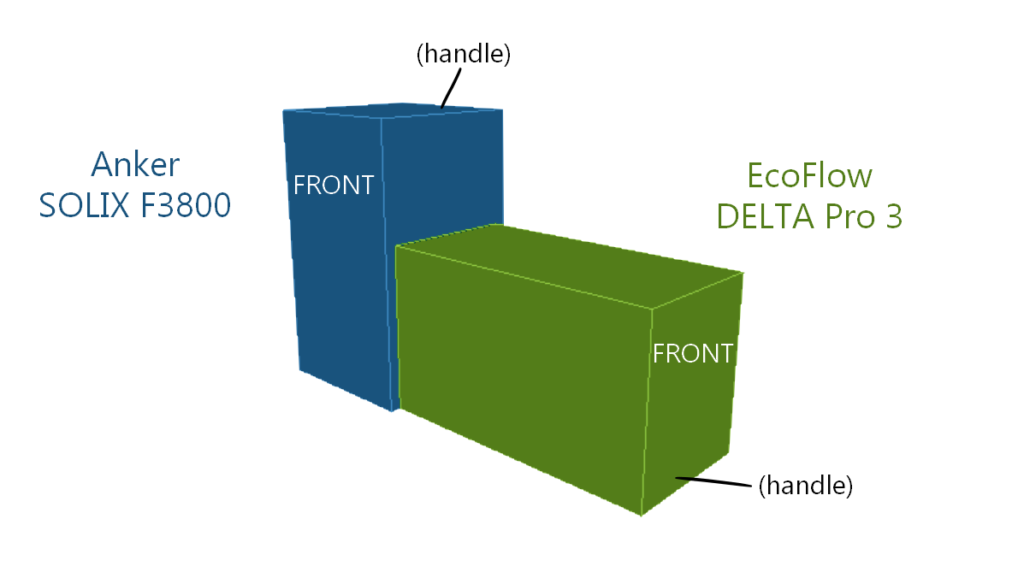
Size
In terms of dimensions, the EcoFlow DELTA Pro 3 is very slightly smaller than the Anker SOLIX F3800, measuring 27.3 x 13.4 x 16.1 in (693 x 341 x 410 mm) compared to the Anker SOLIX F3800 at 27.6 x 15.3 x 15.6 in (701 x 389 x 396 mm). The EcoFlow DELTA Pro 3’s largest dimension is its length or depth (27.3 in), while the Anker SOLIX F3800’s largest dimension is its vertical height (27.6 in).
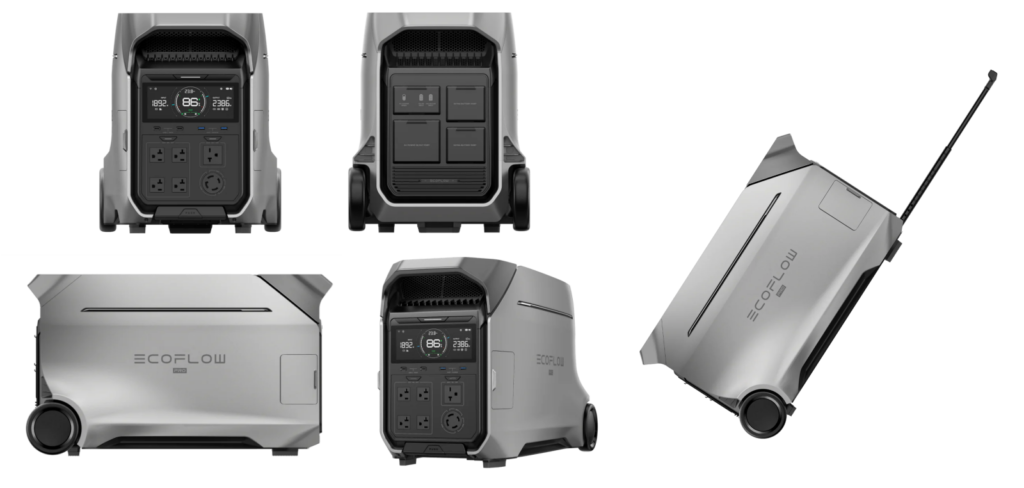
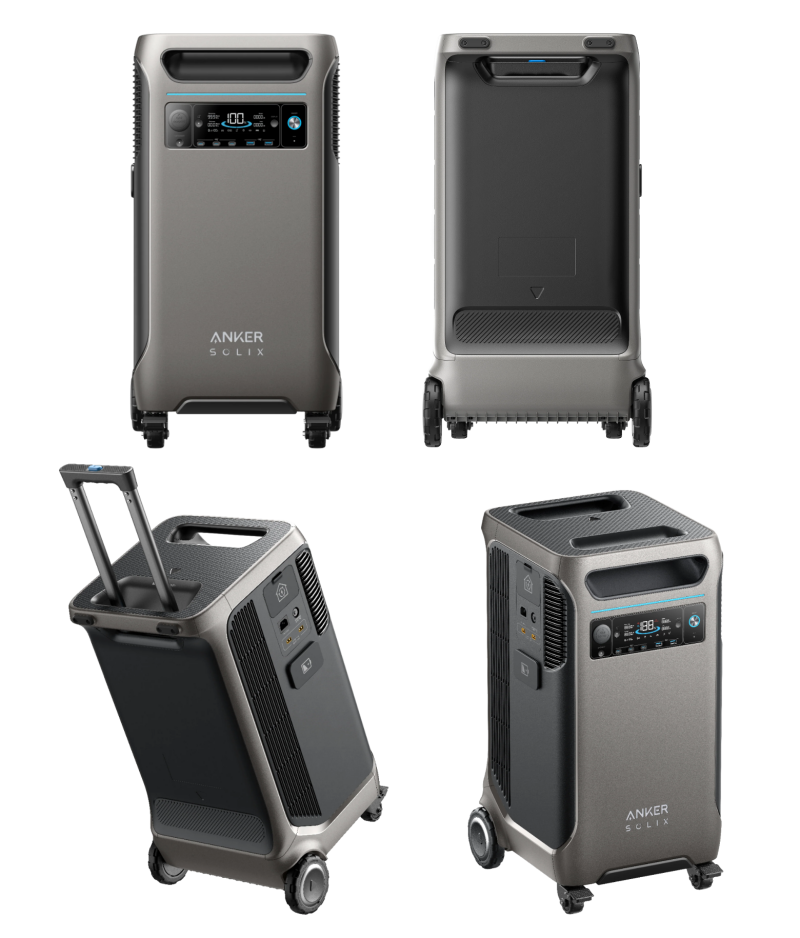
Handle placement and design
As shown in the above images, the EcoFlow DELTA Pro 3 vs Anker SOLIX F3800 differ in terms of their handle placement. Both units have an extendable handle, but on the EcoFlow DELTA Pro 3 the handle is found on the bottom of the front face, and on the Anker SOLIX F3800, the handle is at the far side of the top face. This means you have to stoop a little bit lower to extend out the handle from the EcoFlow unit, whilst the Anker SOLIX F3800’s handle is more easily accessible from a standing position.
In terms of the handle design itself, the difference is pretty negligible – we probably learn towards the Anker’s handle feeling a bit more robust, but both units handles feel secure and well-designed.
The other difference that factors into portability is the matter of wheels. The EcoFlow DELTA Pro 3 only has one set of wheels, at the far end of the unit. The Anker SOLIX F3800 has two sets of wheels – the bigger set are directly under the handle, but there’s also a small pair of wheels at the front of the unit, which means the unit can be easily shifted around once set down, without needing to pick it up by the handles. In our opinion, this makes up for its slightly heavier weight.
Durability
Neither the EcoFlow DELTA Pro 3 nor the Anker SOLIX F3800 have a dustproof or waterproof rating for the main unit, meaning they are not suitable for unsheltered outdoor use, and should be kept away from rain and dust or sand.
The slight difference is that the EcoFlow DELTA Pro 3 does have a IP65 waterproof and dustproof rating for the internal battery pack itself. (In the IP65 nomenclature, the ‘6’ refers to ‘Totally protected against dust’ and the ‘5’ refers to ‘Protected against low-pressure jets of water from all directions, limited ingress permitted’.) This gives a little extra peace of mind when it comes to battery protection – but it doesn’t mean the main unit itself should be exposed to dusty or wet conditions.
For an explanation of IP ratings, see our article ‘IP Rating for Solar Generators: A Complete Guide (2024)‘.
It may also be worth noting that EcoFlow have specifically stated the following on the product page: “The device is suitable for use in well-ventilated indoor environments or sheltered outdoor environments to avoid the impact of rain and dust on the device. Please ensure that the surrounding environment is dry and clean during installation and use to ensure the device’s normal operation and longevity”. So if you are tempted to keep your DELTA Pro 3 in a sheltered outdoor space, just be careful with ensuring the shelter is not too damp.
App Control and Connectivity
Both the EcoFlow DELTA Pro 3 and the Anker SOLIX F3800 offer phone app control and connectivity, providing monitoring and management capabilities.
The EcoFlow app connects via Wi-Fi, Bluetooth, and CAN (Controller Area Network bus). The app allows you to access real-time insights into the DELTA Pro 3’s performance, including battery status, power usage, and detailed control over settings such as remotely setting PV or AC charging schedules and port activation. It also supports remote control activation.
As for the Anker SOLIX F3800, the Anker app also provides monitoring and control features. It connects through Wi-Fi and Bluetooth and allows users to intelligently manage their home energy usage. The app features include setting time-of-use preferences to optimize energy costs, detailed monitoring of energy sources (solar, grid), and managing generator noise with strategic on/off switching. Additionally, the Anker app supports EV charging settings and provides updates on power consumption and remaining battery life.
Here are what the reviews say about the apps for each power station:
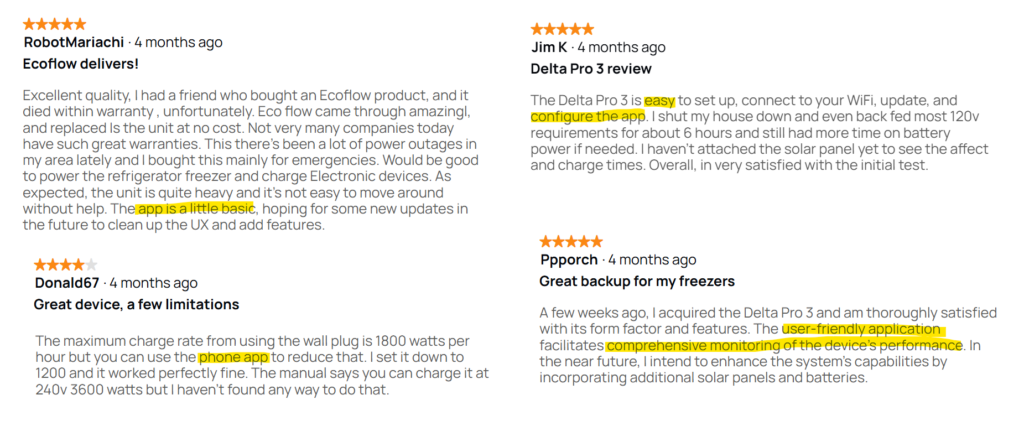

Warranty
Both the EcoFlow DELTA Pro 3 and the Anker SOLIX F3800 offer 5-year warranties.
Please note that this warranty is for products purchased directly from the official EcoFlow and Anker websites directly, and may not apply to products purchased from third-party websites. It is for this reason that we always encourage buyers to purchase directly from the brand’s website, or the brand’s official Amazon stores.
Full Comparison Table
EcoFlow DELTA Pro 3 vs Anker Solix F3800 specifications
| Feature | EcoFlow DELTA Pro 3 | Anker Solix F3800 |
| Price (US) | $3,699 | $3,999 |
| AC Output (W) | 4000 | 6000 |
| Surge Power (W) | 8000 | 9000 |
| Battery Capacity (Wh) | 4096 | 3840 |
| Expandable Capacity | Up to 48kWh with expansion and generator | Up to 53.8kWh with expansion batteries |
| Battery Type | LFP | LFP |
| Life Cycles | 4000 cycles to 80% | 3000+ cycles to 80% |
| AC Outlets | 7 outlets | 6x NEMA 5-20, 1x NEMA 14-50, 1x NEMA L14-30 |
| USB-A Outlets | 2x (12W each) | 2x (12W each) |
| USB-C Outlets | 2x (100W each) | 3x (100W each) |
| Car Outlets | 1x DC5521 (5A), 1x Anderson Port (30A) | N/A |
| Wireless Charging Pad | No | No |
| Solar Charging | Max. 2600W | Max. 2400W |
| AC Charging | 1800W (120V), 3600W (240V) | 1800W Max |
| Car Charging | 12V 8A, 48V 20A Max | 120W car auxiliary port |
| Weight (lbs) | 113.54 | 132.3 |
| Dimensions (in) | 27.3 x 13.4 x 16.1 | 27.6 x 15.3 x 15.6 |
| Smart App Control | Wi-Fi, Bluetooth, CAN | Wi-Fi, Bluetooth |
| Warranty | 5 years | 5 years |
Full comparison table for EcoFlow DELTA Pro 3 vs Anker SOLIX F3800.
Customer Reviews
Both the EcoFlow DELTA Pro 3 and Anker SOLIX F3800 have customer reviews currently averaging 4.8/5. Below, we have compiled the most frequent or significant customer feedback for you to review.
EcoFlow DELTA Pro 3: ⭐⭐⭐⭐⭐ (63)
Pros: What Customers Liked
- ✅ Great design and ease of use: Many appreciated its balanced and straightforward design, particularly noting that its 4kW inverter and 4kW battery was ideal for simple mathematical calculations and integration into home systems
- ✅ Expandable and integrated systems: Customers are highly satisfied with its expandability, often pairing it with additional batteries, solar panels, and a dual fuel Smart Generator for additional power and capacity
- ✅ Reliable for emergency power: The power station is often highlighted for its reliability during power outages, running high-consumption appliances like pellet stoves and entire home systems without issue
- ✅ Quality and customer support: Several reviews point out the high quality of the product and the effective customer support by EcoFlow, including warranty fulfilment and responsiveness to issues
Cons: What Customers Disliked
Anker SOLIX F3800: ⭐⭐⭐⭐⭐ (106)
Pros: What Customers Liked
- ✅ Ease of use and good quality manufacturing: Customers frequently highlighted its straightforward setup and solid build, mentioning that it is reliable and simple to use, especially for emergency backup power
- ✅ Impressive performance and capacity: Many were impressed with its ability to power high-consumption appliances and whole-home systems, able to handle substantial loads without issue
- ✅ Versatile and expandable system: Its compatibility with additional batteries and solar panels was a key advantage for many who were looking to enhance their system's capacity
- ✅ Positive customer service experiences: A number of customers mentioned responsive and helpful customer support, which helped them resolve issues
Cons: What Customers Disliked
- ❌ Technical support and guidance: Some reviews mentioned having problems with accessing technical support, as well as a lack of detailed user manuals, which complicated the setup and use for less tech-savvy individuals
- ❌ Mobility and handling issues: Despite having handles and wheels, some found the unit's heavy weight a challenge to move, especially when setting up or repositioning
- ❌ Slow solar recharge rate: A few reviews mentioned that recharging the unit with a single solar panel is impractical, especially in less sunny conditions or during short winter days, requiring additional panels for effective solar charging
- ❌ Packaging and durability concerns: A few customers received units with damaged packaging or minor cosmetic flaws, which raised some concerns about shipping handling and the unit's durability during transit
Purchase Options
Both power stations can usually be purchased in a discounted bundle with compatible accessories, for example solar panels or expansion batteries. It’s worth checking the main product page for each power station to see what bundles might be available at a discounted rate, as these occasionally change over time. Otherwise, the accessories and add-ons can always be purchased separately.
Note that bundle options and availability may vary by country/location.
The EcoFlow DELTA Pro 3 has the following purchase options for bundles on its product page, as well as optional add-ons:
- DELTA Pro 3 (just the power station)
- DELTA Pro 3 + 4x 125W bifacial modular solar panel
- DELTA Pro 3 + 400W portable solar panel
- DELTA Pro 3 + 2x 220W portable solar panel + transfer switch
- DELTA Pro 3 + DELTA Pro 3 extra battery
- DELTA Pro 3 + 2x 400W rigid solar panel
- DELTA Pro 3 + transfer switch
- DELTA Pro 3 + EcoFlow Smart Home Panel 2
- DELTA Pro 3 + Smart Home Panel 2 + installation fee
- Compatible add-ons:
- Compatible solar panels:
The following purchase options and compatible accessories are available for the Anker SOLIX F3800:
- Anker SOLIX F3800 (just the power station)
- 2x Anker SOLIX F3800 (Dual System)
- Anker SOLIX F3800 + BP3800 Expansion Battery
- Anker SOLIX F3800 + 2x BP3800 Expansion Battery + Home Backup Kit (transfer switch)
- Anker SOLIX F3800 + Smart Home Power Kit (integrates utility grid and rooftop solar system)
- Solar panel kit purchase options:
- 400W portable solar panels (1-3x)
- 2x 410W rigid solar panels (2x, 4x)
- Compatible add-ons:
Conclusion
Now we’ve covered all the different topics of the EcoFlow DELTA Pro 3 vs Anker SOLIX F3800, which is the winner?
As with most of these comparisons, the power station that comes out on top will often depend on your specific needs and preferences. It’s another case of a ‘high quality problem’, where you can’t really go wrong with choosing either model. Both EcoFlow and Anker are highly-respected and reputable brands which have excellent track records for their craftsmanship and reliability.
If we were forced to choose a winner, the DELTA Pro 3 might come out slightly on top, due to its higher capacity and customizability, which cater well to users with significant power needs. However, the Anker SOLIX F3800 really isn’t far behind in this regard. Both units offer expandability and an excellent set of compatible add-ons (including ranges of solar panels), both are well designed, and both are very similarly priced.
One important point we often make when it comes to these reviews is to consider your long-term goals. When investing in portable power solutions like those from EcoFlow or Anker, consider the compatibility across the entire brand’s repertoire of products. Brands often design their products – such as solar panels and expansion batteries – to be cross-compatible with other products in their lineup. For example, an expansion battery purchased for one EcoFlow model may also be compatible with other devices in their range, which will make expanding or upgrading your setup a lot more straightforward in the future. Therefore, it’s wise to align your purchase with a brand whose range of compatible accessories fits your long-term power needs.
EcoFlow DELTA Pro 3 vs Anker SOLIX F3800: Final thoughts
- If you want a slightly lighter option: EcoFlow DELTA Pro 3
- If you want the highest base power output: Anker SOLIX F3800
- If you don’t intend to use expandable capacity but want the highest base capacity: EcoFlow DELTA Pro 3
- If you want fastest charging times: EcoFlow DELTA Pro 3
- If you want the sleekest aesthetic design: Anker SOLIX F3800
- If cost is the most important factor to you: EcoFlow DELTA Pro 3 (at full price) (or whichever is currently cheapest on sale)
We hope this comparison of EcoFlow DELTA Pro 3 vs Anker SOLIX F3800 has helped to make your decision a bit clearer!
For further reading, you might be interested in:
Solar Trek is all about breaking down information about solar-powered brands and products into a helpful, easily digestible format. All of our content is totally objective, aimed at helping you to make the best purchasing decisions for your solar needs. If you click our links and make a purchase, we may earn some commission at absolutely no extra cost to you, but this does not interfere with our goals of providing 100% helpful, informative, and objective information.


